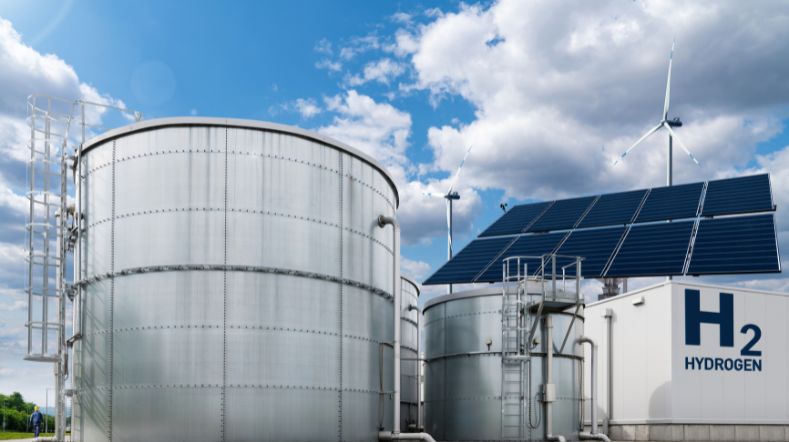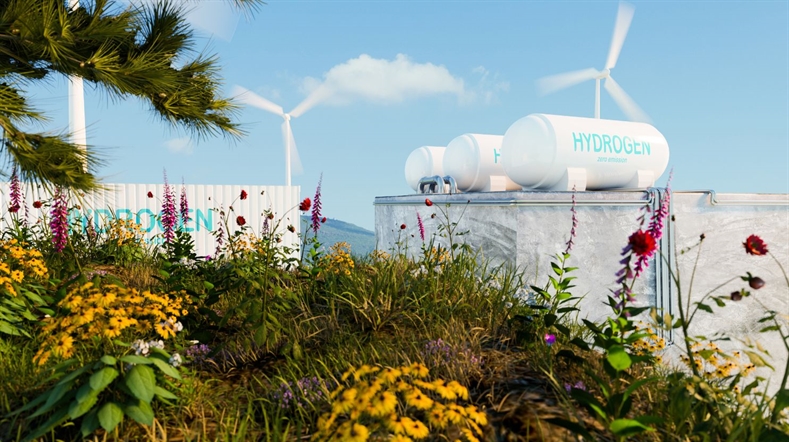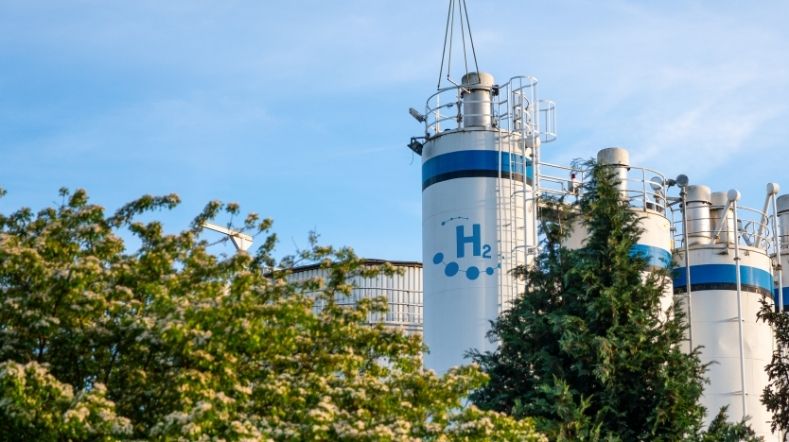
Infrastructure, large-scale storage and transport of hydrogen
Over the next 10 years, the number of offshore wind farms will increase to a capacity of 11.5 gigawatts by 2030. This expansion will make it essential to store and transport hydrogen on a large scale. The North Sea is very suitable for producing green, fully sustainably generated hydrogen, storing it, and transporting it to shore.
Production of green hydrogen
Hydrogen is indispensable in the energy transition. It helps reduce carbon emissions from energy-intensive industries. We’re contributing to innovations for large-scale offshore production and storage of hydrogen. We devise concepts, develop technologies, and carry out practical tests. For example, an installation to produce green hydrogen will be built on an oil and gas platform off the coast of The Hague. This hydrogen will be produced from sustainable electricity generated by wind and sun.
Webinar ‘The Netherlands as an international hydrogen hub’
René Peters of TNO, Noé van Hulst of the Ministry of Economic Affairs and Climate Policy, and René Schutte of Gasunie discuss the opportunities and challenges for the Netherlands as an international hydrogen hub.
Robust infrastructure
Without a reliable and scalable hydrogen infrastructure, the hydrogen economy cannot take off. Stakeholders across the Netherlands, Europe and beyond face the challenge of connecting production, import, transport and storage—across sectors and borders. TNO develops integrated system solutions to support this transition: from modelling tools for network planning and flexibility, to technologies for storage, conversion and large-scale import through ports. In close collaboration with governments, grid operators, industry and international partners, we are building a resilient and future-proof hydrogen infrastructure.
Hydrogen transport
There are many empty gas fields under the North Sea where hydrogen can be stored. At times of high energy demand, it can be brought ashore through existing gas pipelines. We’re investigating the most robust and inexpensive way to transport the electricity generated at sea to large users in the form of hydrogen molecules. Transporting hydrogen is considerably cheaper than transporting electricity via cables.
Gas pipelines
Moreover, the existing infrastructure of onshore and North Sea gas pipelines is ideally suited for this purpose. The amount of natural gas that now flows ashore through these pipelines is far larger than the target of 11.5 gigawatts of wind power by 2030. This makes it attractive also to bring ashore the sustainable energy that is produced in the form of hydrogen.
Storing hydrogen
We’re conducting another study into storing hydrogen in salt caverns or empty gas fields. Gas fields are potentially suitable, but it must be proven that storage is safe and economically feasible. On land, hydrogen can be stored safely in empty salt caverns, which were previously used to store natural gas and are leak-proof. If you generate sustainable energy on land and convert it into hydrogen, it’s much cheaper to store and transport than electrons.
Storage in empty gas fields and salt caverns
Energy from sun and wind depends on the weather conditions. Storing the energy as hydrogen, both onshore and offshore, makes it possible to balance demand better. However, considerably more can be stored in empty gas fields offshore than in salt caverns. In our research on underground hydrogen storage in gas fields and depleted wells, we focus mainly on leak-tightness and whether and how hydrogen reacts to materials and rocks. We’re collaborating on this with industrial partners.
Small-scale storage
We’re also developing new materials for small-scale storage of hydrogen in special tanks. Here, we store hydrogen as a high-pressure gas or bound to another element to keep it liquid. In this context, we’re conducting studies and testing materials for storing hydrogen under extreme conditions, such as high pressure or low temperature. Possible applications are the transport of heavy loads by road and water. Liquid hydrogen has a temperature of -253 degrees Celsius. It must be safe and profitable to ship it from the production site to the place where there is demand for it. This is where we bring together our knowledge of gas, process technology, chemistry, and materials.
Blue hydrogen
Together with industry in the port of Rotterdam, we’ve developed plans to reduce CO2 emissions significantly. Blue hydrogen is the solution here, because the CO2 released during the production of hydrogen is captured and transported to empty gas fields in the North Sea.
Current projects
Project H-vision is about transporting the carbon-neutral blue hydrogen. The hydrogen is moved from a centrally located factory on the Maasvlakte, through a new pipeline network in the port area, to the chemical and refining companies. And CO2 is transported to empty offshore gas fields via the Porthos network. On a national level, Gasunie’s network must adapt and expand in order to transport green hydrogen from the North Sea and other sources to large industrial clusters: Rotterdam, Eemshaven, IJmuiden, Terneuzen, and South Limburg.
Collaborate with us
Special tanks are needed to use hydrogen safely as a fuel in cars, trucks, or aircrafts. We’re looking for partners to join us in producing safe hydrogen tanks. Interested? Please contact René Peters.
Get inspired
World Hydrogen Summit 2025
Hydrogen in the energy system: The future of sustainable energy in the Netherlands and Europe


NORCE and TNO are entering into a strategic partnership on hydrogen developments


Dutch consortium participates in EU research project on large-scale hydrogen storage in depleted gas fields


Underground hydrogen storage



